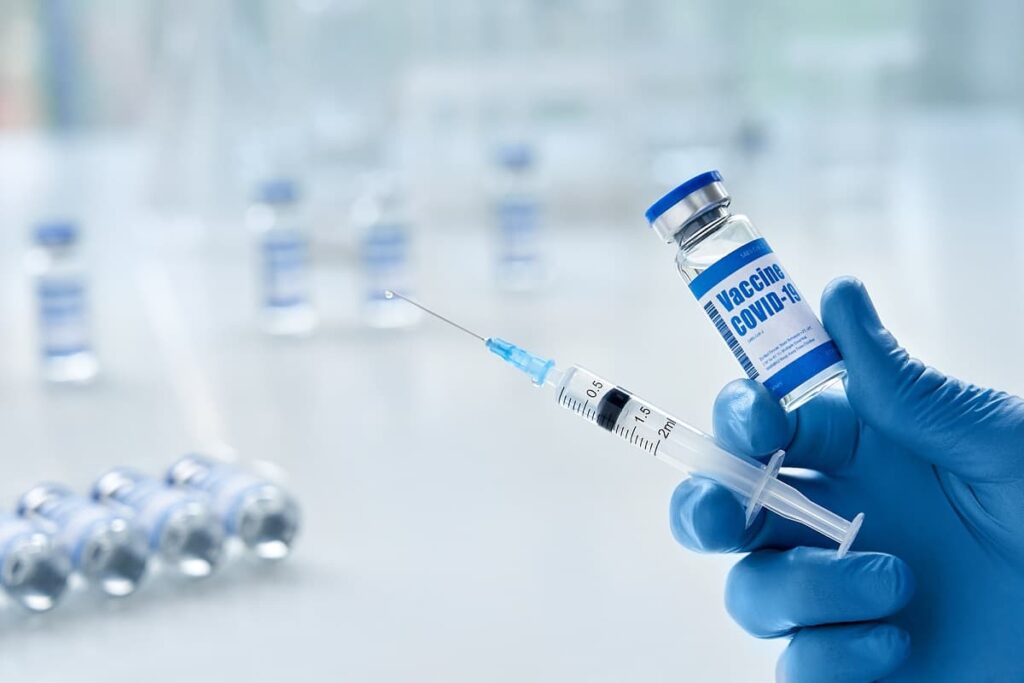9 Regenerative Medicine Companies for Living Longer
Table of contents

The desire to extend lifespan is as old as human civilization. The concept of an “elixir of life” that could confer immortality appeared in the Indian Vedas before 1000 BCE (and perhaps much earlier), and the search for it consumed alchemists for centuries, from ancient China and India to Medieval Europe. Unfortunately, many of the “elixirs” these alchemists created contained heavy metals, which when consumed tended to have the opposite of the intended effect.
Fortunately for us, we may now be living in a time when reality is catching up to myth. With the advent of new knowledge and new technologies, extending healthy human life increasingly appears to be possible. It’s a space that’s frequently referred to as “longevity,” and there are a number of approaches being taken to make sure that running out of retirement money is an inevitability. According to the bright minds at CB Insights, some methods used to increase lifespan include:
- Drugs and Supplements. When cells stop dividing (i.e., become “senescent”), some of them die but others just hang around and secrete inflammatory molecules that damage nearby cells and tissues. This leads to disease, decrepitude, and shorter life. The search is on for drugs that remove those senescent cells and reverse the damage they cause
- Caloric restriction. A less popular method of extending life requires severely restricting caloric intake. Putting mice on near-starvation but nutrient-rich diets extended their life by 50%. It’s something 30% of Americans should give a try for other reasons.
- Count Dracula Approach. In perhaps the most macabre approach to increasing longevity, there appears to be some evidence that blood transfusions from the young confer youthful vigor on the elderly, something that was just firmly denounced by the FDA today.
- Genetic Manipulation. Manipulating the genes that mediate aging has been shown to extend the lifespan of roundworms, flies, and mice. One new company is exploring whether this can be done with dogs and, by extension, humans, but its founders (one of them being George Church himself) are keeping progress, if any, tightly under wraps.
- Regenerative Medicine. This broad category is all about restoring the structure and function of damaged tissues or organs using everything from stem cells to 3D bioprinters.
It’s that last category – regenerative medicine – that we want to look at today. Here are some companies working in regenerative medicine.
Regenerative Medicine From a Unicorn
In case you’re wondering if regenerative medicine has potential, look no further than this unicorn with a $12 billion valuation. Founded in 2008, San Diego startup Samumed took in a whopping $438 million Series A round in August of last year which they’re using to become “a leader in medical research and development for tissue-level regeneration” which brings total disclosed funding to $650 million. The company’s technology is best described in their own words as follows:
One of the primary signaling pathways that regulate the self-renewal and differentiation of adult stem cells is the Wnt pathway, which plays a crucial role in tissue health, ranging from formation to replenishment and from repair to regeneration of various tissues. Conversely, the dysregulation of the Wnt pathway in a particular tissue almost always leads to a disease of that tissue. The ability to modulate the Wnt pathway, and thereby recover and restore the health of diseased tissues, presents significant opportunities in regenerative therapeutics.
The company makes it a point to say that the platform is “not a stem cell therapy” and that they’ve been able to develop small-molecule drugs that “modulate Wnt activity” and sort out everything from osteoarthritis to Alzheimer’s disease.
The drug candidate that’s furthest along in the Samumed pipeline is a drug to sort out male pattern baldness, something we touched on in our article on “When Will There Ever Be a Cure for Baldness?”
Regenerating Blood Vessels
Founded in 2004, North Carolina-based Humacyte is a privately held corporation that has raised $468 million in funding so far to develop a proprietary technology to “grow” Human Acellular Vessels (HAVs) for use in vascular surgery and regenerative medicine. Currently, there are only three options for replacing diseased or damaged blood vessels; pull a vessel from another part of the body, use a donated vessel, or use a plastic tube. The first option requires two surgeries and the loss of a vessel from another part of the body (typically the leg), and the second and third both run the risk of rejection and/or infection. Fortunately, there will soon be a fourth option. Because Humacyte’s HAVs have properties similar to native tissues but have all cells removed, the risk of rejection is low. Humacyte was the first company to receive an FDA Regenerative Medicine Designation and has products in both pre-clinical investigations and in clinical trials.
Stem Cells for Regeneration
Long touted as the answer to many intractable health problems, stem cell research seems finally to be bearing fruit. Founded in 2016, New Jersey startup Celularity has taken in $290 million in funding so far to harvest stem cells from postpartum placentas and uses them to advance several promising therapies designed to regenerate damaged tissue, produce whole organs to replace failing ones, augment immunity, and increase longevity.
In their own words “by replenishing our reservoir of stem cells –– nature’s repair kit –– on an ongoing basis, we can augment our longevity.” Celularity seeks to make 100 years old the new 60, and to provide people with maximal aesthetics, mobility, and cognition as they age. Though it launched just late last year, the company already has over twelve pre-clinical stem cell and new drug trials in progress.

Founded in 2013, U.K. startup OxStem has raised $21.8 million in funding to “help people with latent or established degenerative disease live healthier, longer lives.” Regenerative stem-cell therapy typically involves manipulating the cells in the lab and then transplanting them to the patient. OxStem’s approach is to awaken the stem cells that already exist in the patient and induce them to repair tissues damaged by disease or injury. OxStem intends to use this approach to develop therapeutics that treat (and potentially cure) the typically age-related conditions of dementia, heart failure, macular degeneration, cancer, and diabetes. Their intent is to spin out subsidiary companies to address each one of these health areas.
At present, they have established six Stem companies: OxStem Oncology, OxStem Neuro, OxStem Ocular, OxStem Cardio, OxStem Beta, and OxStem Immuno.

Retail investors will be happy to know there’s at least one pure-play stock in the regenerative medicine space. With a market cap of around $550 million, Osiris Therapeutics, Inc. (OSIR) “researches, develops, manufactures and commercializes regenerative medicine products intended to improve the health and lives of patients and lower overall healthcare costs.” Unlike many early-stage pharma companies, Osiris is actually turning a profit from this. Revenue for the quarter ending September 30, 2018, was $36.5 million, which represented a gross profit of $26.7 million. This cash flow is a result of their highly successful bio-engineered stem-cell and placental-tissue-based skin substitutes, bone graft substitutes, and cartilage substitutes, which promote healing and repair tissue damaged by age, disease, or accident.
Regenerating Telomeres

Organ Regeneration
One area of regenerative medicine is organ regeneration. Anyone remember Organovo (ONVO)? They’re a company that was quite popular back in the heydays of 3D printing with their visions of being able to “print” human organs, something we would refer to as “3D bioprinting.” The last time we wrote about Organovo was in our article titled “An Organovo Article With a Negative Spin” at which time the stock was trading for around $5.30 a share. Today, those same shares trade for a fraction of that price at around $1.10 per share representing a loss of almost -80%.
We’ve always cautioned investors about companies that uplist from the OTC market, and so far Organovo hasn’t been able to hit those big revenues they need to keep their financials from looking like this:
While Organovo works to upright the ship, other firms are making progress in the area of bioprinting human organs. At least one other firm is working on 3D printing human tissues and organs. At least one other startup is working on developing technology to 3D print engineered human tissues and organs.

Update 07/30/2019: Prellis Biologic has raised $8.7 million in Series A funding to support its mission to use 3D holographic printing to create 3D tissue and organs for research and transplantation. This brings the company’s total funding to $11.1 million to date.
Conclusion
There are hundreds of companies working on various forms of regenerative medicine, and the few we’ve talked about here help demonstrate just how much money is being thrown at treating age-related conditions. It’s also important to think of the social impact of “living longer,” something that may sound appealing but needs to be thought through using a pragmatic approach instead of emotions.
What’s the quality of life you can expect if you’re 84 and your life is extended by 15 years? Will you have enough money in retirement if you extend your lifespan by a couple of decades? These are questions that will soon need to be answered by retirement planners and actuaries who will need to cope with a new world where people live longer, whether through regenerative medicine or the other methods we mentioned earlier. Maybe a better solution is figuring out how to make people stay younger for a longer period of time. And then we find ourselves back to the age-old search for a fountain of youth.
Sign up to our newsletter to get more of our great research delivered straight to your inbox!
Nanalyze Weekly includes useful insights written by our team of underpaid MBAs, research on new disruptive technology stocks flying under the radar, and summaries of our recent research. Always 100% free.


















